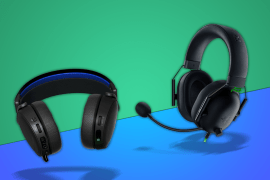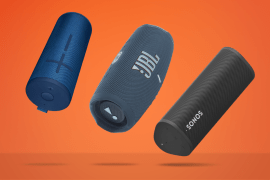Corsair HS80 Max review: get connected
A beefy battery and Bluetooth bring multi-platform skills to an already great headset

Stuff Verdict
Improves on an already stellar gaming headset with better connectivity and a beefier battery. The Corsair HS80 Max will please PC and PS5 players alike.
Pros
- Comfortable for all-day gaming
- Wireless and Bluetooth for wide compatibility
- Excellent battery life
Cons
- Wireless OR Bluetooth – not both at once
- Fierce competition at this price
Introduction
Splitting your gaming time between PC and console used to be a right pain. Peripherals were proprietary, games were format-exclusive, and the concept of crossplay bordered on witchcraft. Things are a lot easier in 2024, especially on the hardware front. Plenty of gaming headsets have gone multi-platform, and now it’s Corsair’s turn.
The Corsair HS80 Max brings Bluetooth on board, along with a considerably bigger battery than the firm’s previous mid-range effort, for all-day play no matter your preferred platform. As long as that platform is a PC, PlayStation or portable, that is. Higher quality wireless audio and Dolby Atmos also make the cut.
Those new additions have pushed the price further towards premium territory, though. Is the HS80 Max enough of an all-rounder to earn a recommendation? I spent the last month gaming, music streaming and movie watching to find out.
How we test headphones
Every pair of earphones and headphones reviewed on Stuff is used for a minimum of a week’s worth of daily listening. We use a playlist of test tracks made up of multiple genres to assess sound, and use our years of experience to compare to other models. Manufacturers have no visibility on reviews before they appear online, and we never accept payment to feature products.
Find out more about how we test and rate products.
Design & build: keep it in the family
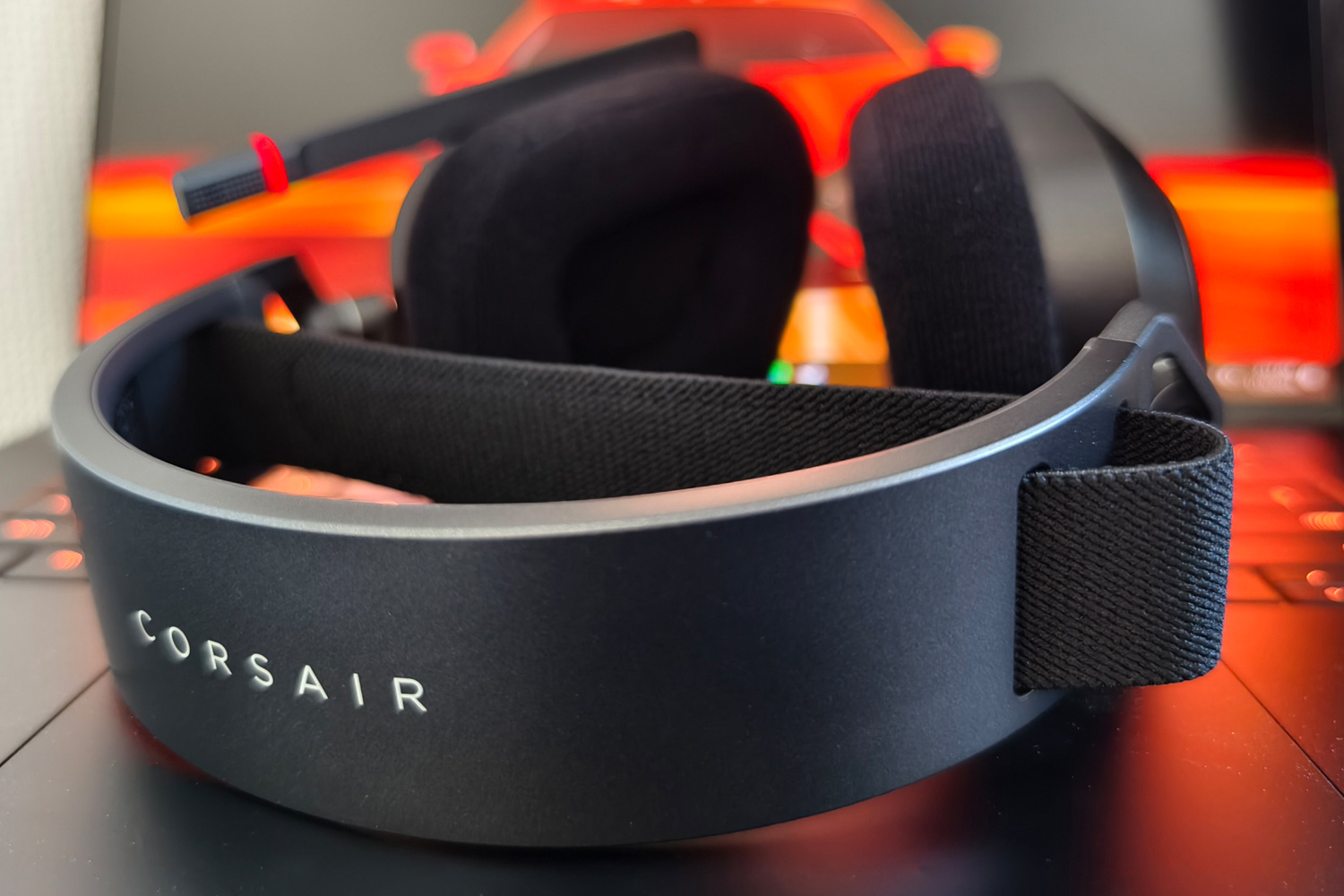
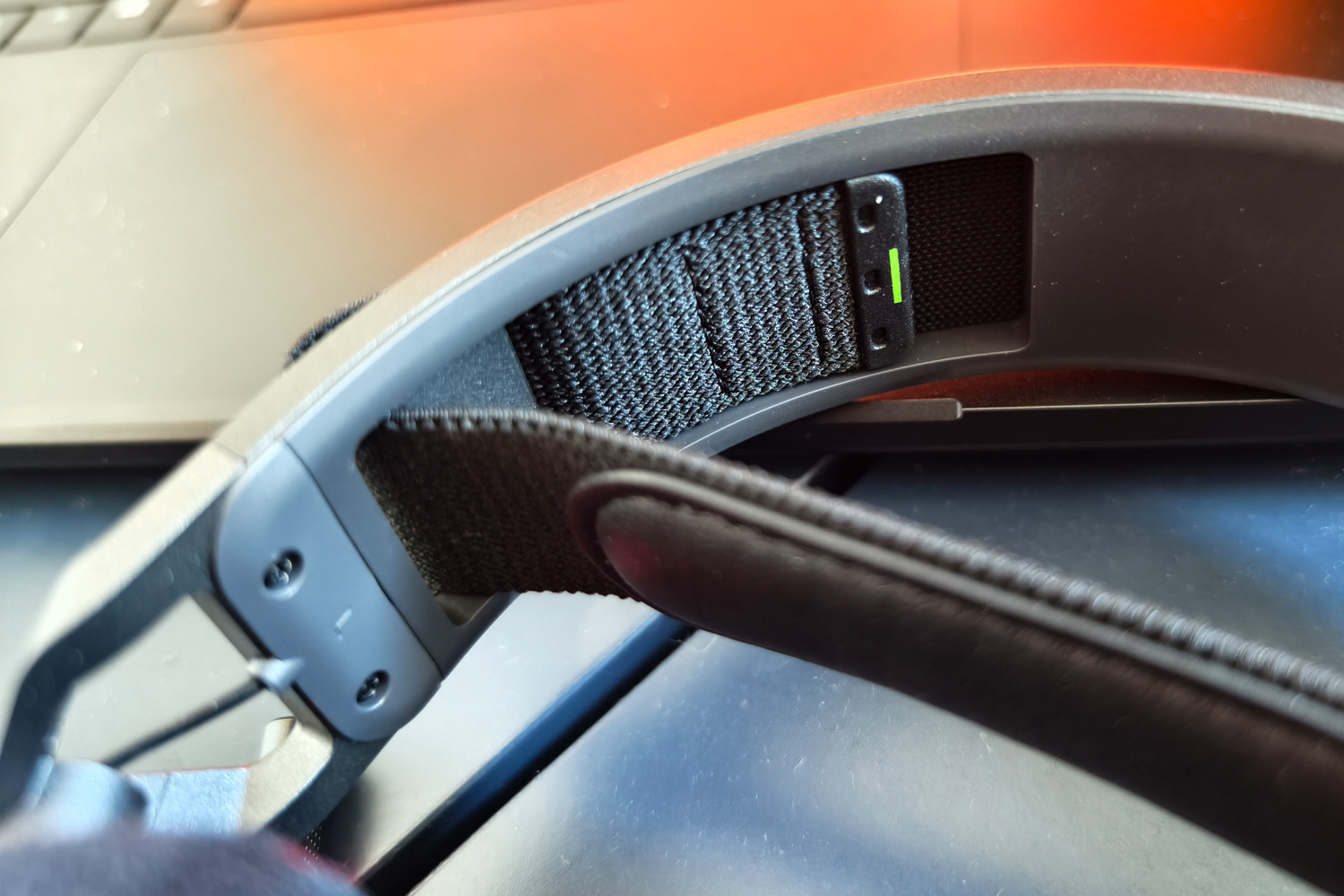
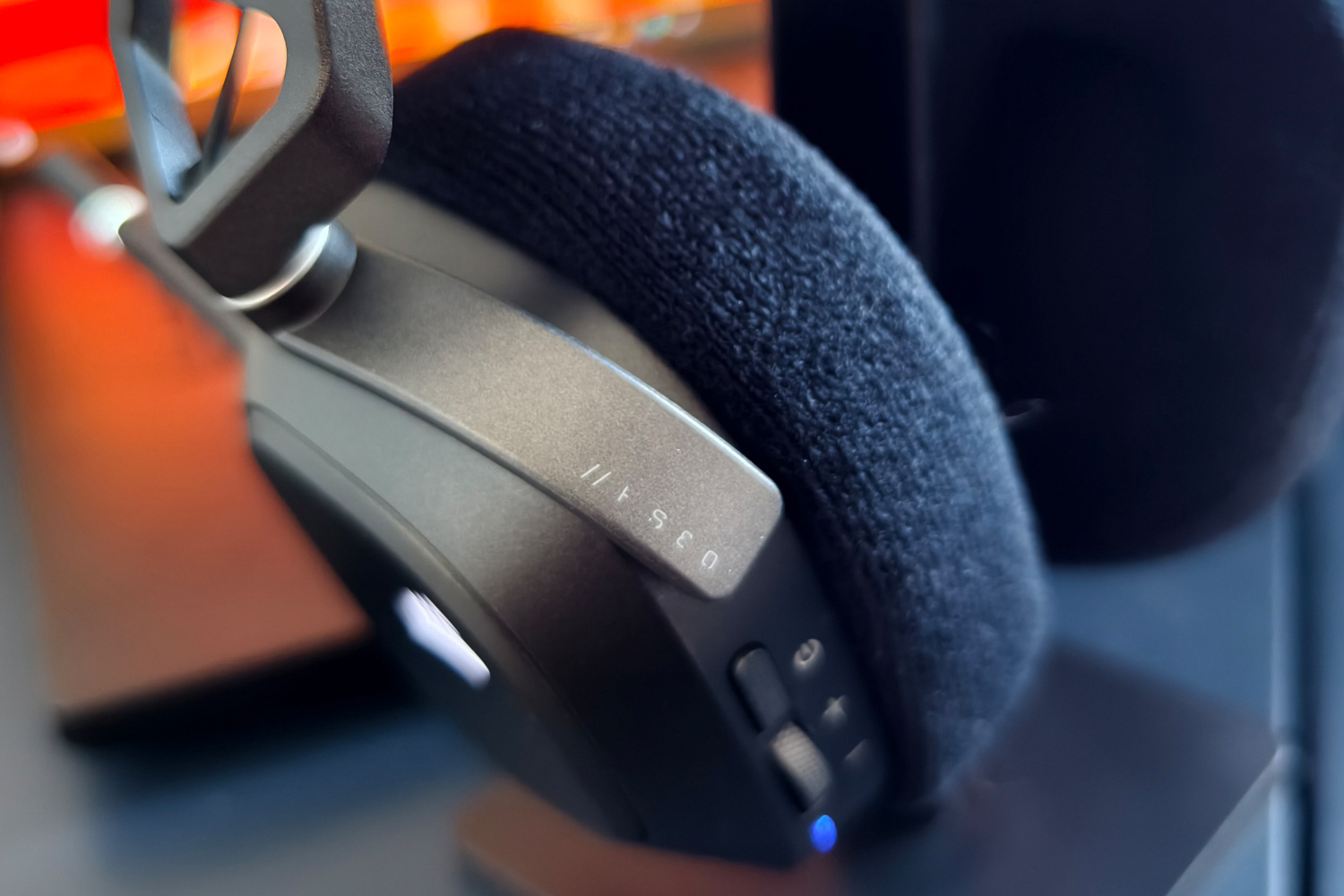
The HS80 Max doesn’t deviate from the previous-gen HS80 RGB Wireless on the styling front. It has the same angular ear cups, same comfort-focused floating headband, and same built-in boom microphone. It’s easily stowed when not in use, and automatically unmutes itself when pulled into position. It’s permanently affixed, though: I’d be more inclined to use the headset out of the house if it were detachable.
My review unit looks sleek in “Steel Gray”, with minimal branding and the subtlest of RGB illuminations highlighting the Corsair logo on each ear cup. They can be customised, or switched off to boost battery life, through the iCue PC software. There’s also a more distinctive white model if you want to match your existing peripherals.
I’ve long found Corsair’s gaming headsets to be among the most comfortable around, and the HS80 Max continues that trend. Its ear cups both swivel and rotate, and the headband keeps a lot of weight off the very top of your head. Velcro straps make for easy adjustment. The ear cushions are also packed with plenty of memory foam padding, and breathable fabric covers meant my ears didn’t get toasty after a prolonged play session.
Corsair has kept things simple as far as controls go. There’s just a power button and volume wheel on the left ear cup, with the latter also switching between EQ presets when pushed down. The single button on the right ear cup handles Bluetooth pairing, and single/double/triple presses manage music playback when paired to compatible devices.
Features & battery: century club
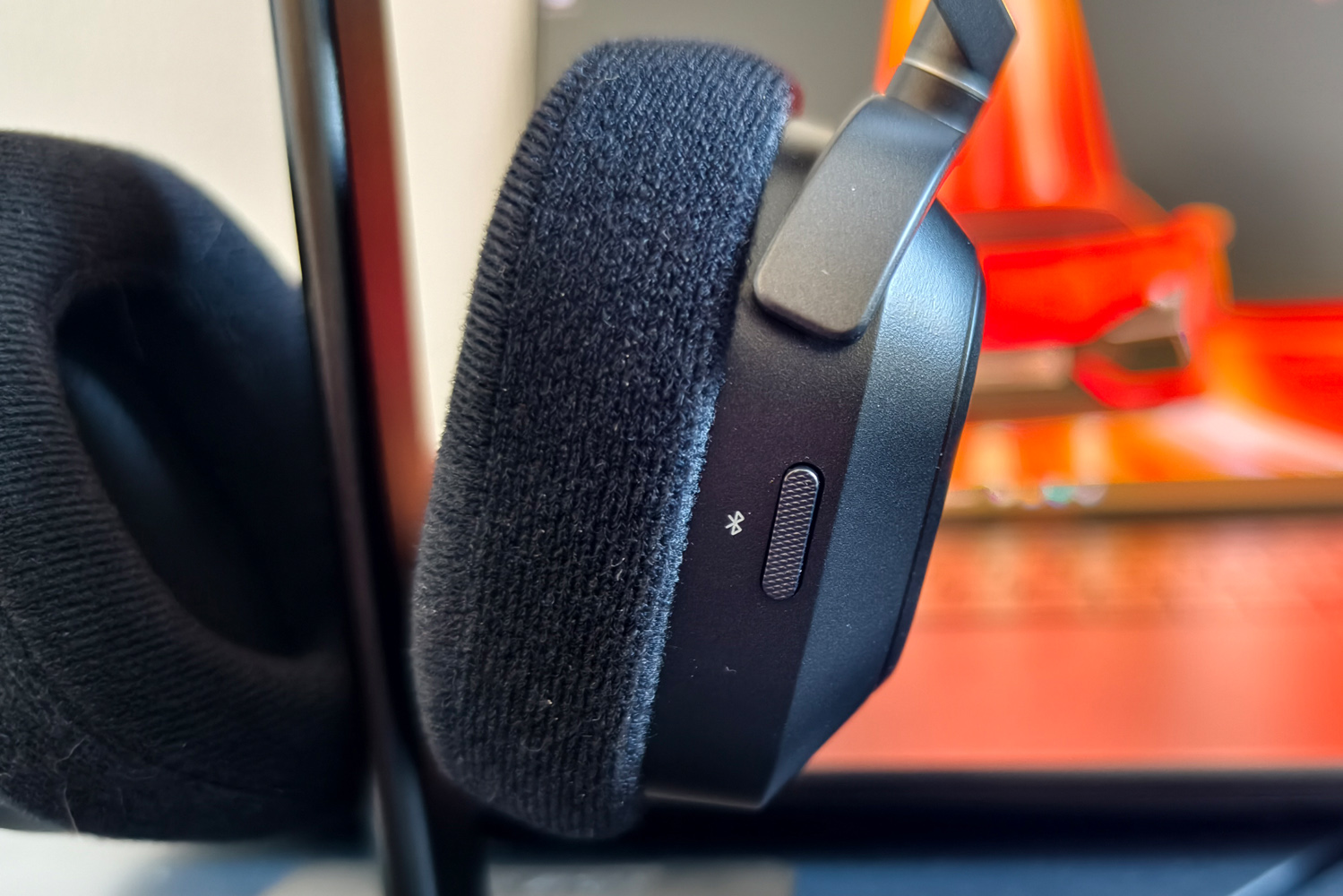
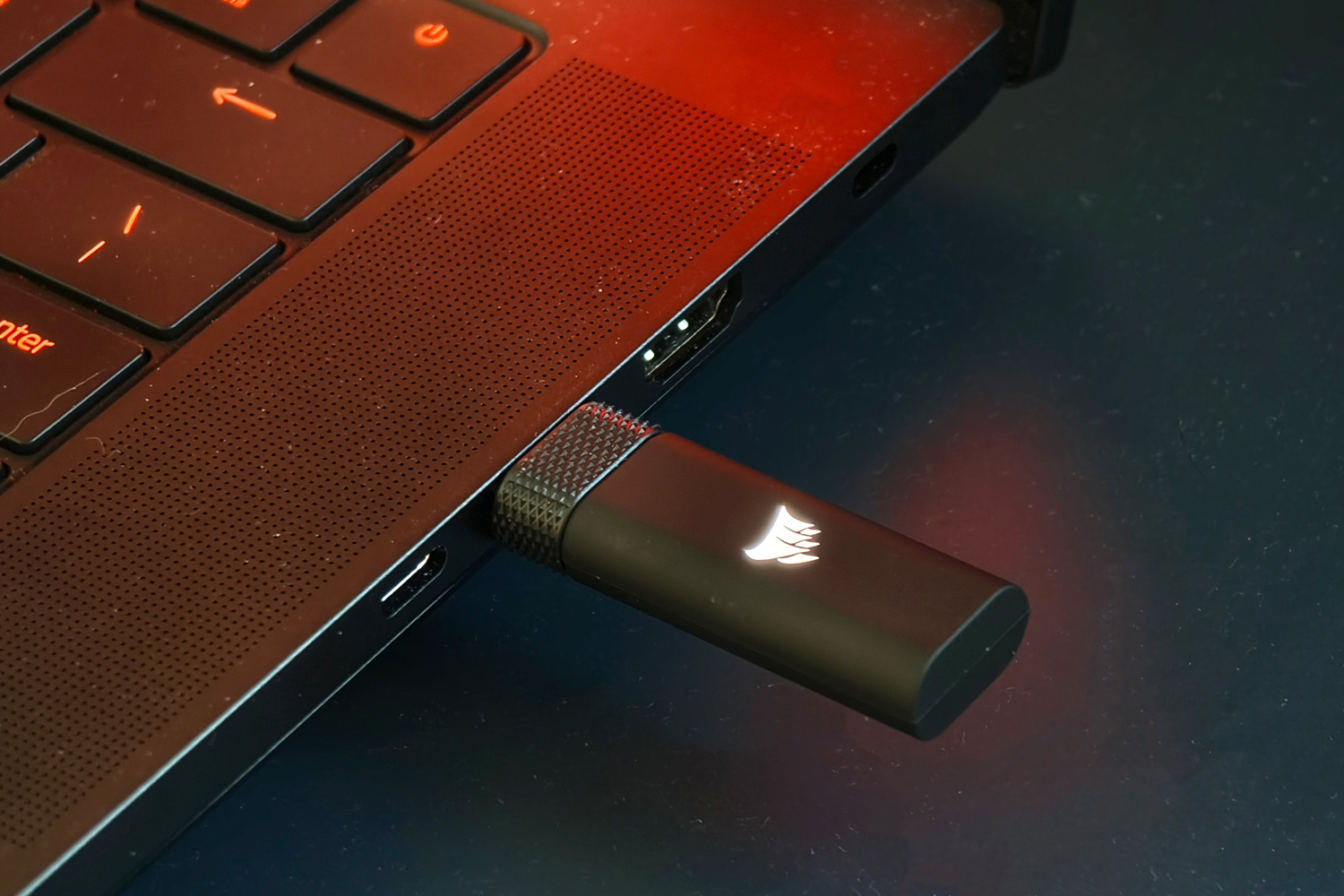
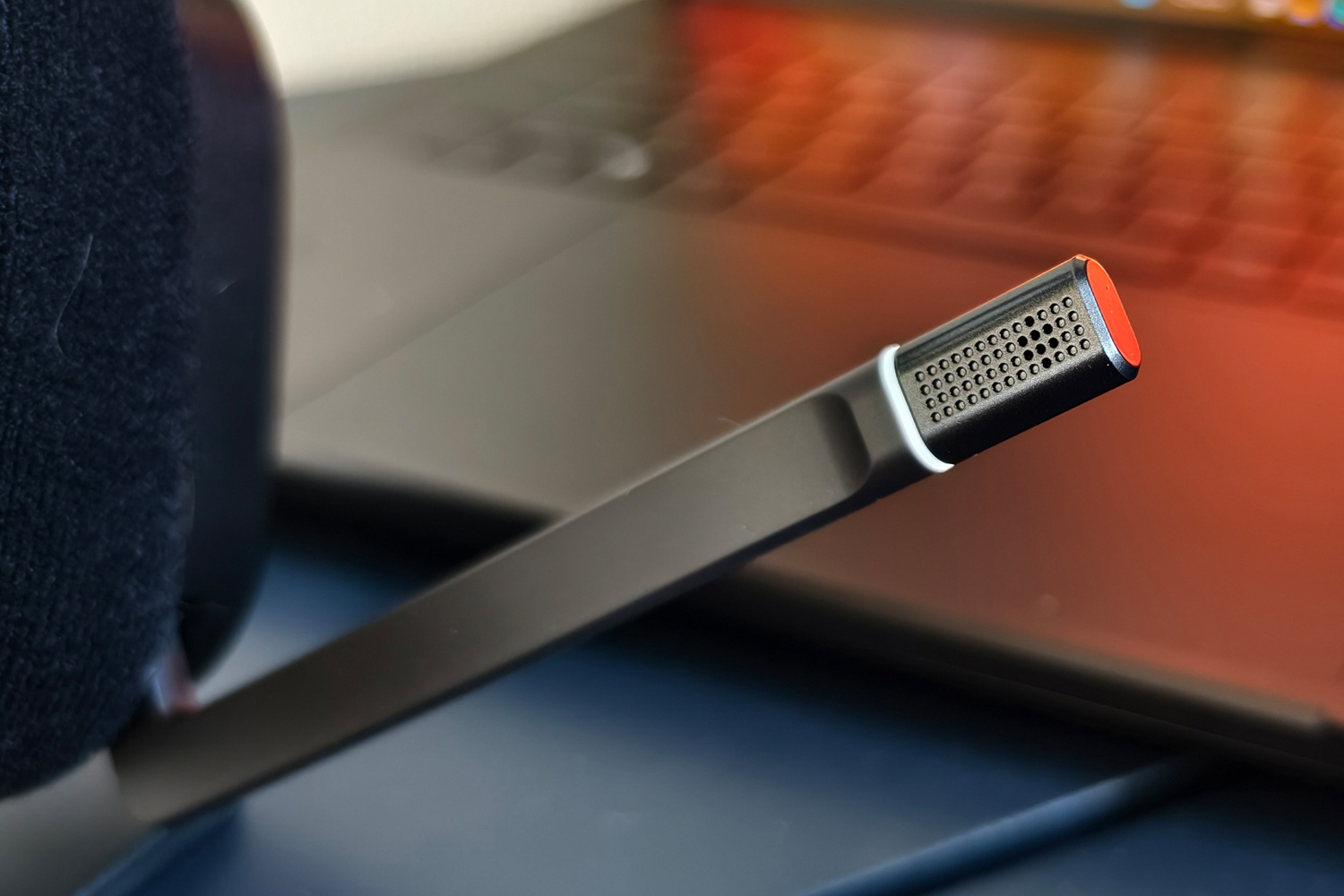
There’s only one input on the HS80 Max: a USB-C charging port on the left ear cup. It can’t be used for wired listening, only to refuel the built-in (and not user-replaceable) battery. There’s no 3.5mm hookup for analogue listening, either.
That means you’ll either need to use Bluetooth, or plug in the bundled 2.4GHz wireless dongle. It’s a heck of a lot skinnier than the chunky ones Corsair used to use. The USB-A connector means you can’t plug it directly into a Steam Deck, and there’s no USB-C adaptor in the box either. There’s also no way to have both wireless and Bluetooth connections active at once. That means no listening to podcasts through your phone while gaming on your PS5.
How you pair dictates battery life, but both methods put in a great showing. With the RGB lighting turned off I saw north of 60 hours from a single charge over 2.4GHz wireless. That’s up there with the Razer Blackshark V2 Pro and Logitech G Pro X 2, which are both more expensive. RGB lighting effects drop that figure to closer to 24 hours, so unless you’re a Twitch streamer I’d recommend keeping them off to save on trips to a plug socket.
Bluetooth goes even batter, with Corsair claiming up to 130 hours of listening time. In my experience that’s as good as it gets for a gaming headset with Bluetooth; while the HyperX Cloud Alpha Wireless can almost hit 300 hours, it’s proprietary wireless only.
Corsair’s wireless range claim of 50 feet held up in my testing; I was able to use the 2.4GHz connection anywhere in my house without dropouts. It’s great to see 24bit/96kHz audio support over wireless now, too. You had to use a wired connection to get the same on the outgoing HS80 RGB Wireless. PS5 owners will appreciate support for Tempest 3D Audio, and PC players can get Dolby Atmos virtual surround sound.
Interface: that’s my Cue
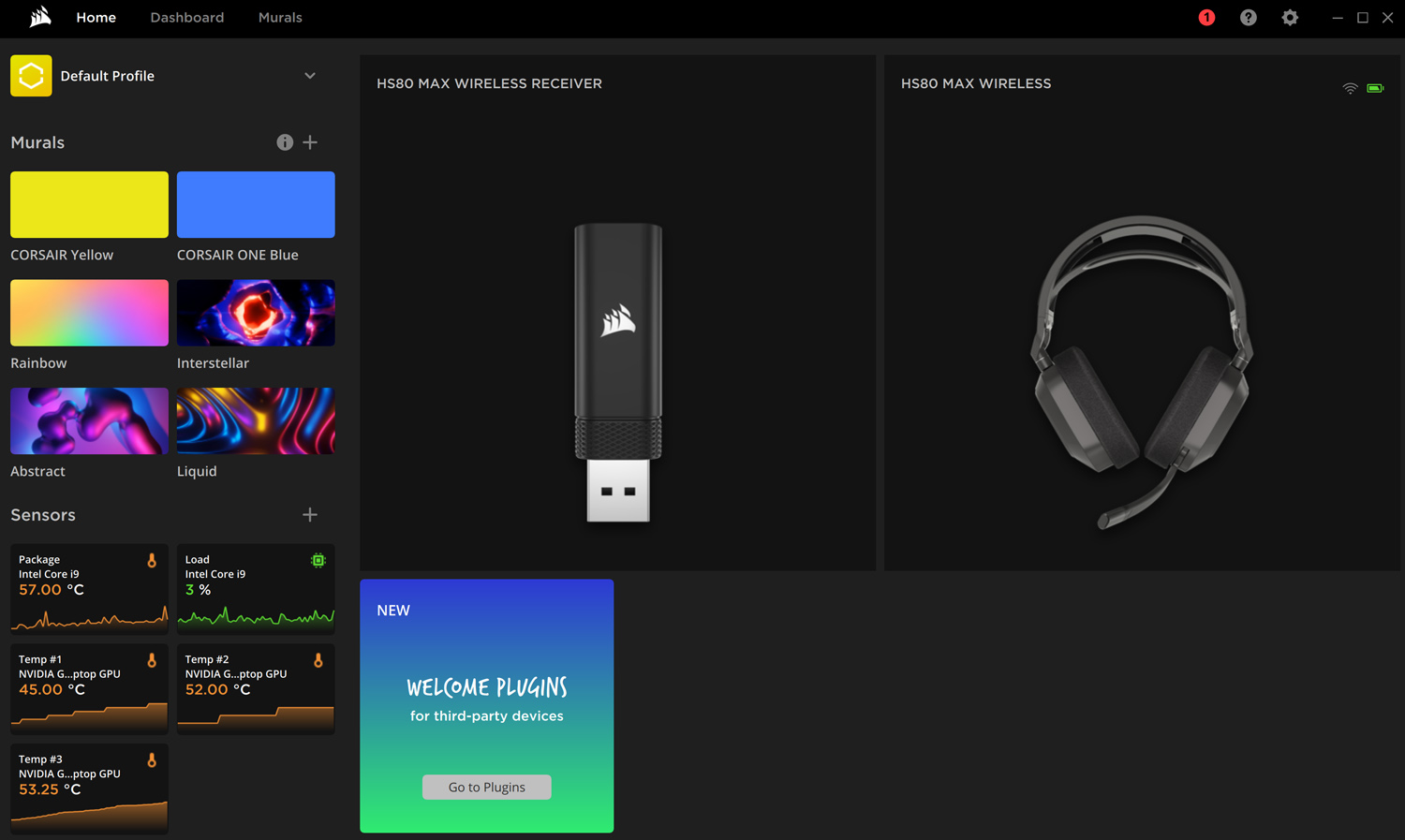
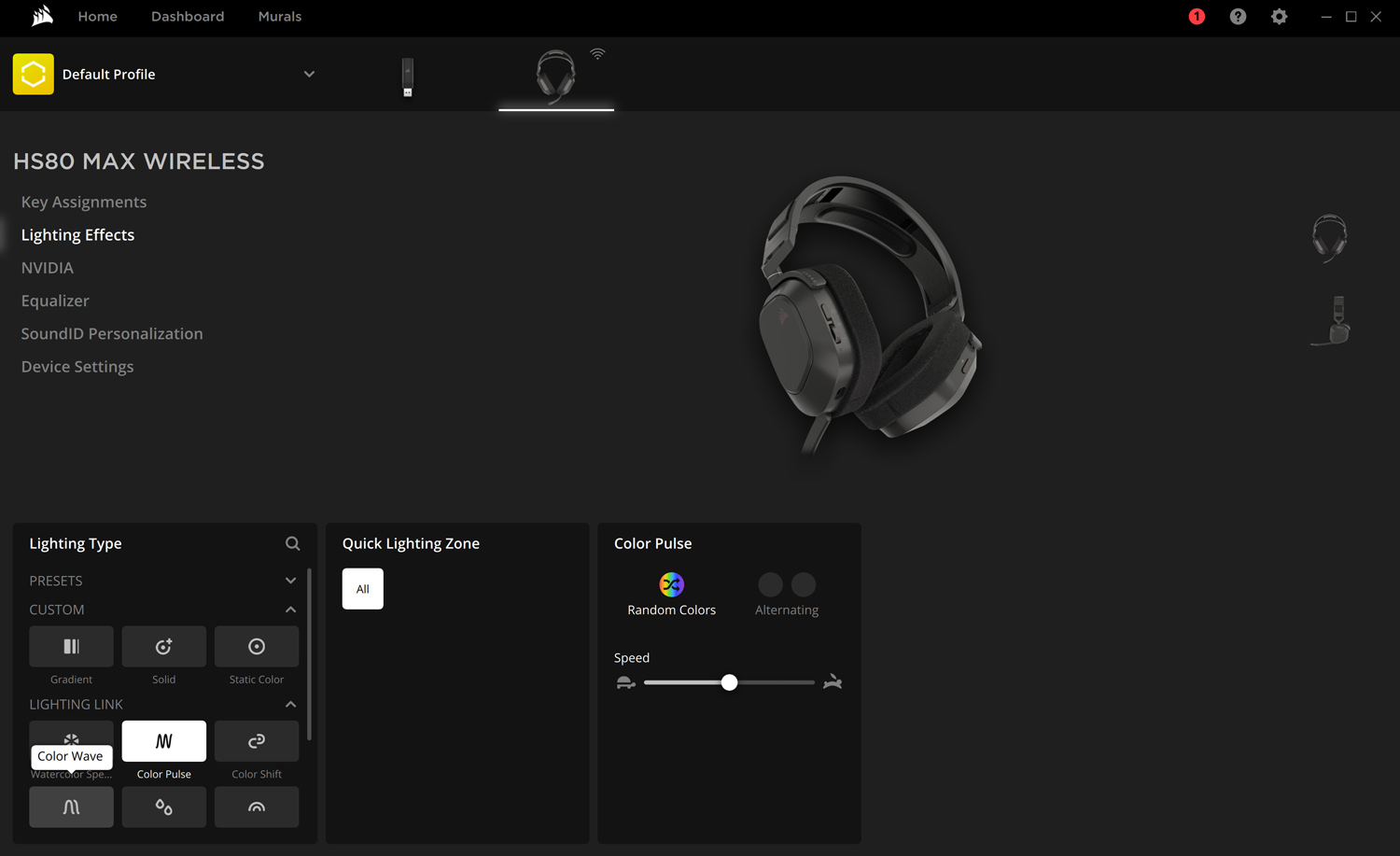
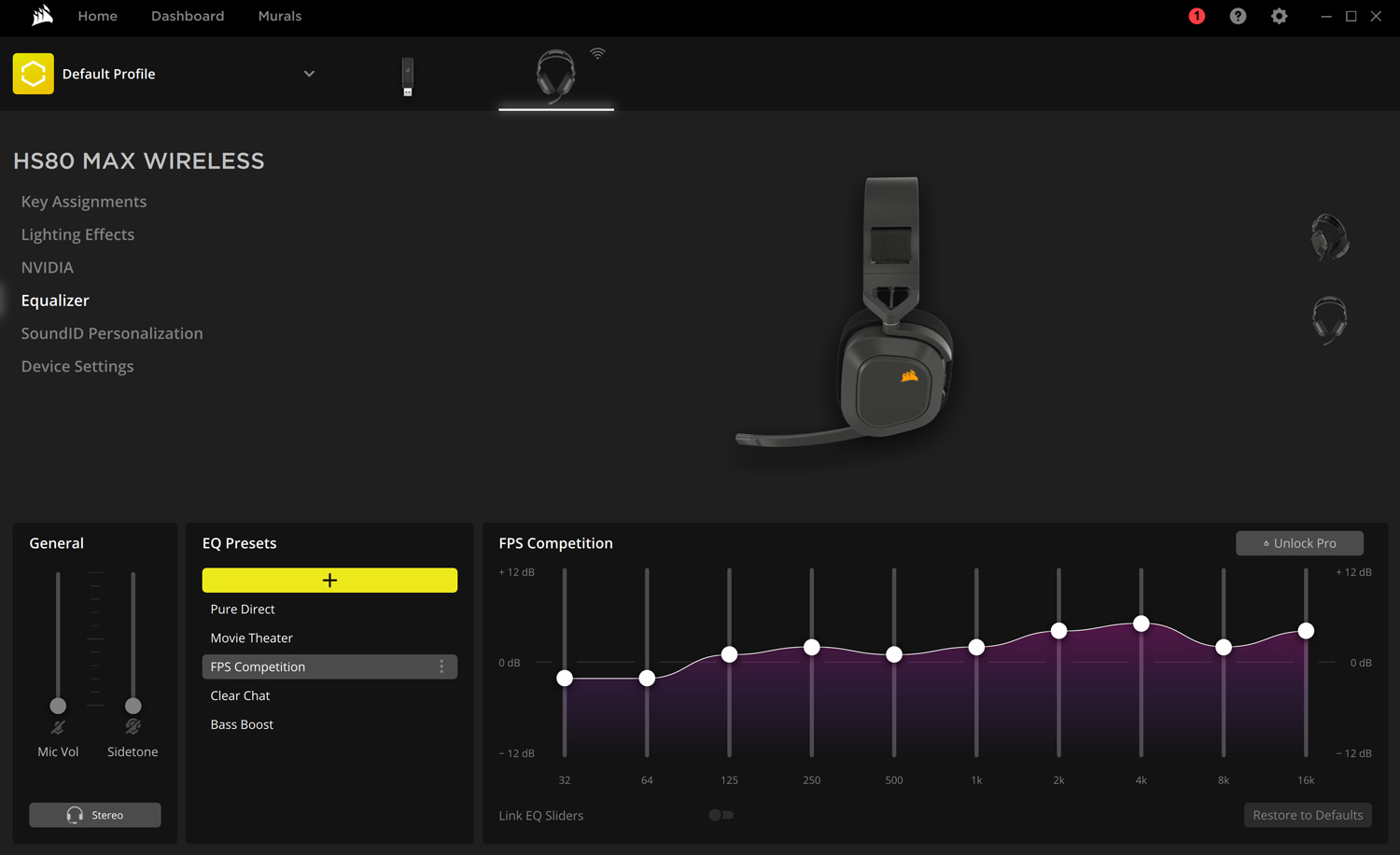
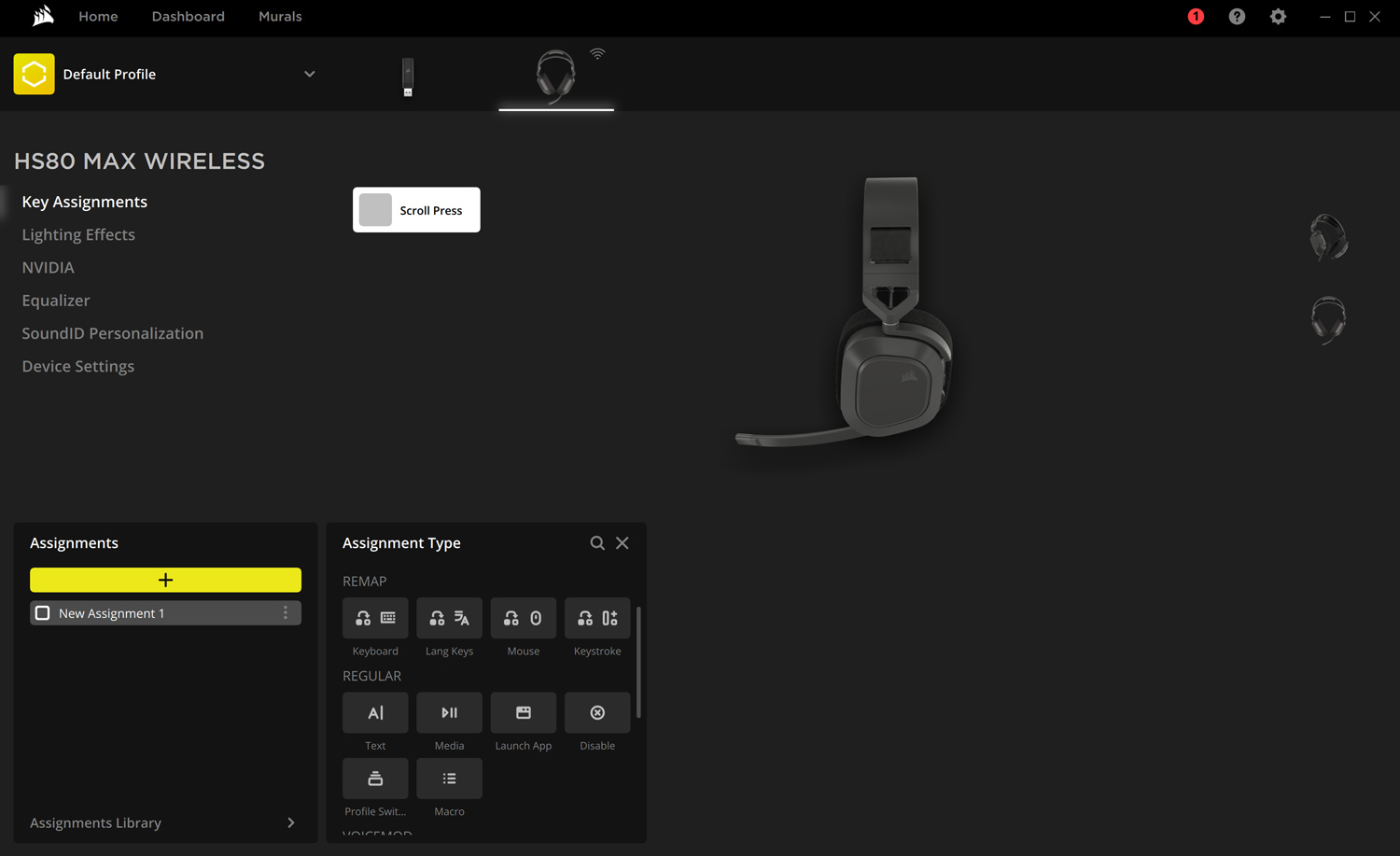
Like pretty much every Corsair product, the HS80 Max is tweaked through the iCUE software suite. The latest version is more user-friendly than ones I’ve used in the past, with device-specific settings and features being easy to access.
Not that the HS80 Max has too many of those, with button customisation, RGB lighting controls, and a 10-band adjustable EQ being the most notable. I like that you can set a press of the volume wheel to open a specific PC program or even perform a keyboard/mouse macro.
SoundID personalisation is the outlier; it’s essentially a hearing test that measures how sensitive each of your ears are, using A/B tests of a bunch of music clips. I had mixed results, with one try producing very subtle differences and the other much more marked ones. It was better to create a custom EQ by hand, but some might like the less technical approach used here.
There’s also Nvidia Broadcast support if you have an RTX 2060 graphics card or higher. This uses machine learning to reduce background sound, while also boosting your voice for clearer in-game comms. It worked very well in my testing, with none of my teammates complaining despite having a TV on in the background.
Sound quality: Atmos-pheric
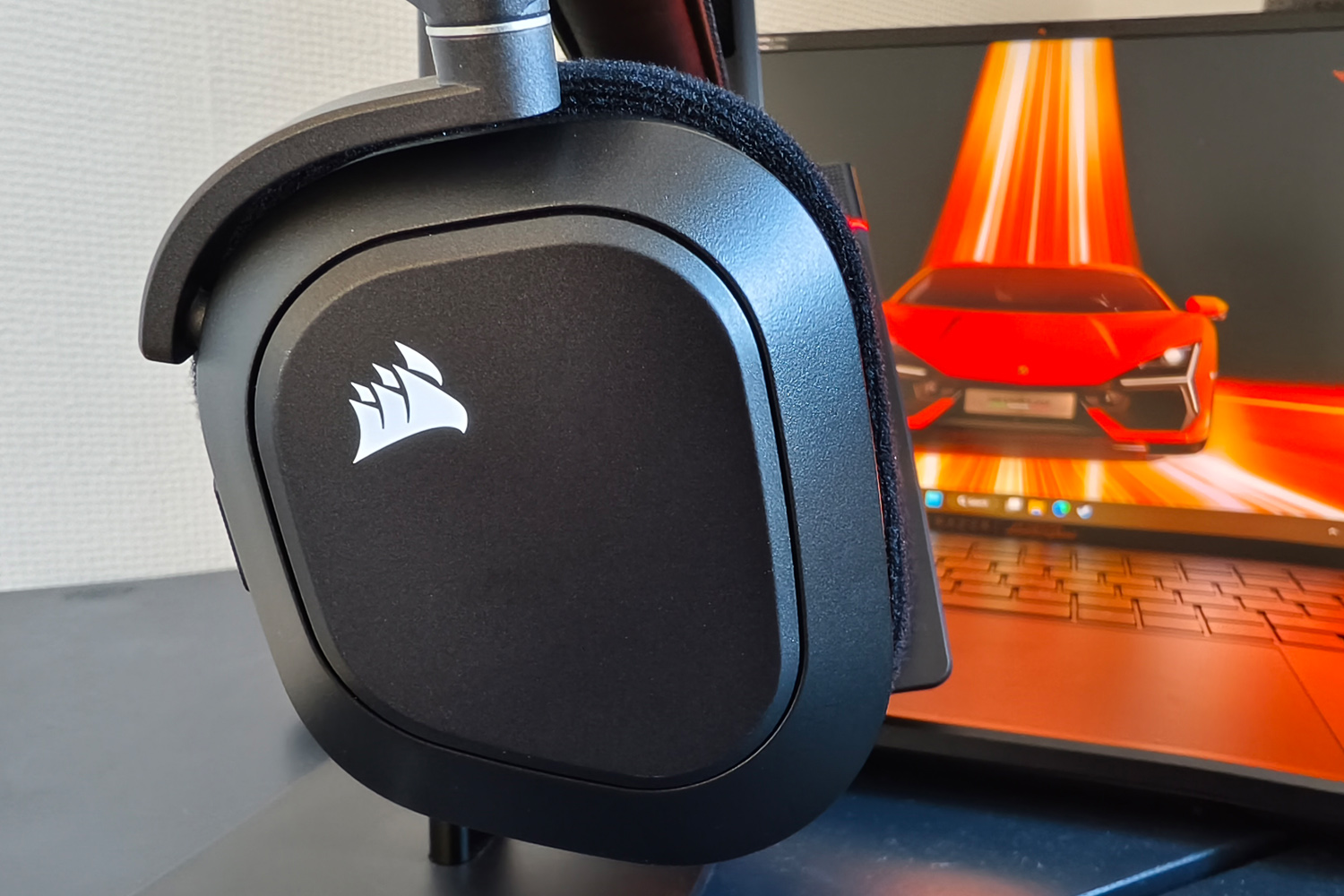
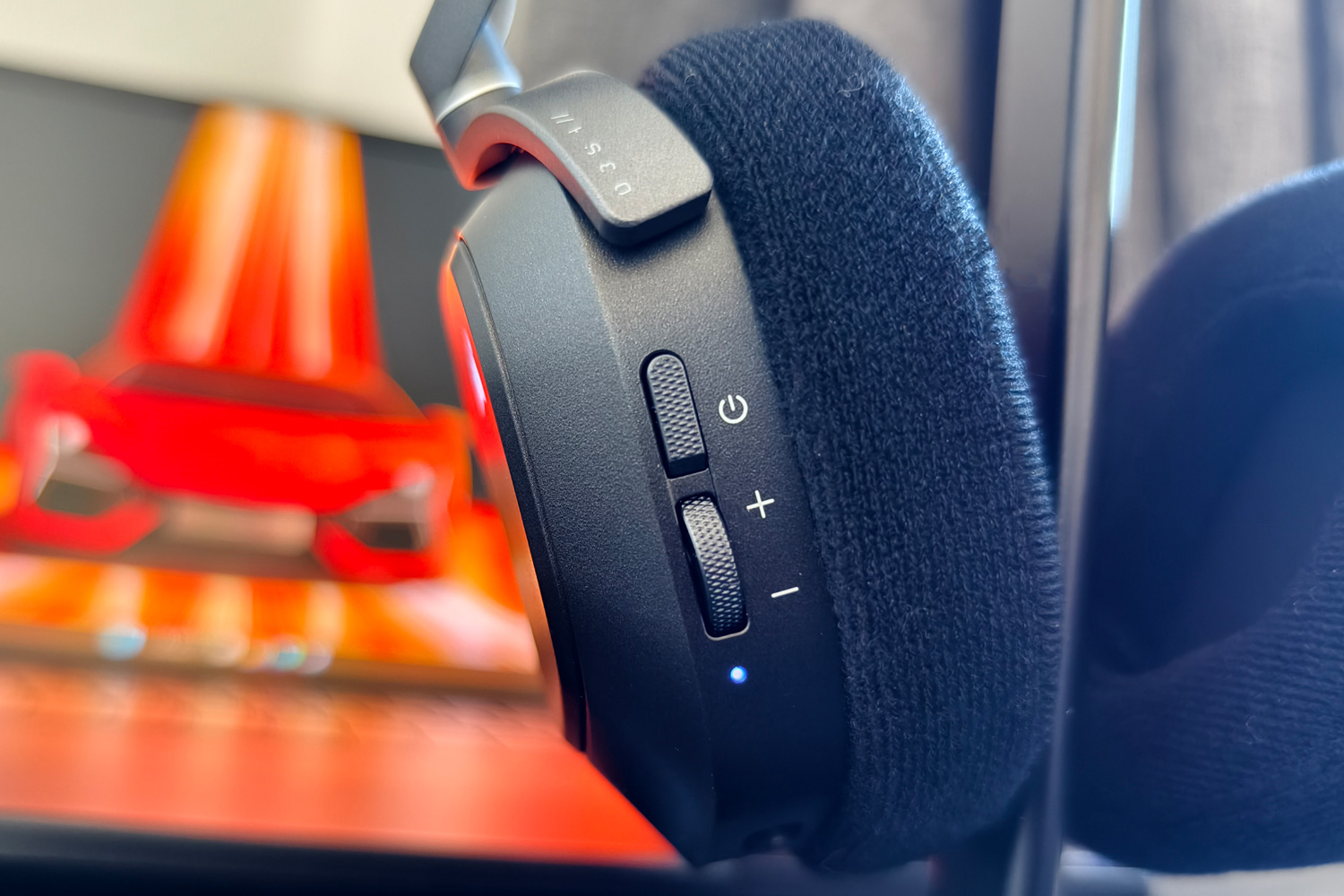
It’s no surprise that Corsair has tuned the HS80 Max for gaming; deep, powerful bass gave Cyberpunk 2077‘s gunshots and explosions proper impact, while the higher frequencies gave things like breaking glass some welcome bite. I found details were a little lacking compared to the Logitech G Pro X 2, which has greater definition without becoming harsh, but not by a huge margin.
There’s real warmth here, which works wonderfully for games and does a decent job for streaming video too. The soundstage isn’t the widest I’ve heard from an over-ear headset, but individual elements are still easily picked out during hectic action sequences. Atmos helps things here when playing on PC, while Tempest 3D audio works just as well as any headset I’ve tried on my PS5.
Dolby Atmos audio isn’t built into iCUE – you have to download the Dolby Access app through the Windows store. A license is granted when it detects the headset, so is free to use. I found it subtly widens the in-game sound, rather than dramatically expanding it like some virtual surround systems. Those can make it harder to place enemies in virtual space, but I didn’t struggle with that here.
Music lovers are going to find high-end precision a little lacking, and bass too encompassing – at least on the default presets. I managed to tune some of the back using software, but still think there are rival headsets with more well-rounded EQs.
Corsair HS80 MAX verdict
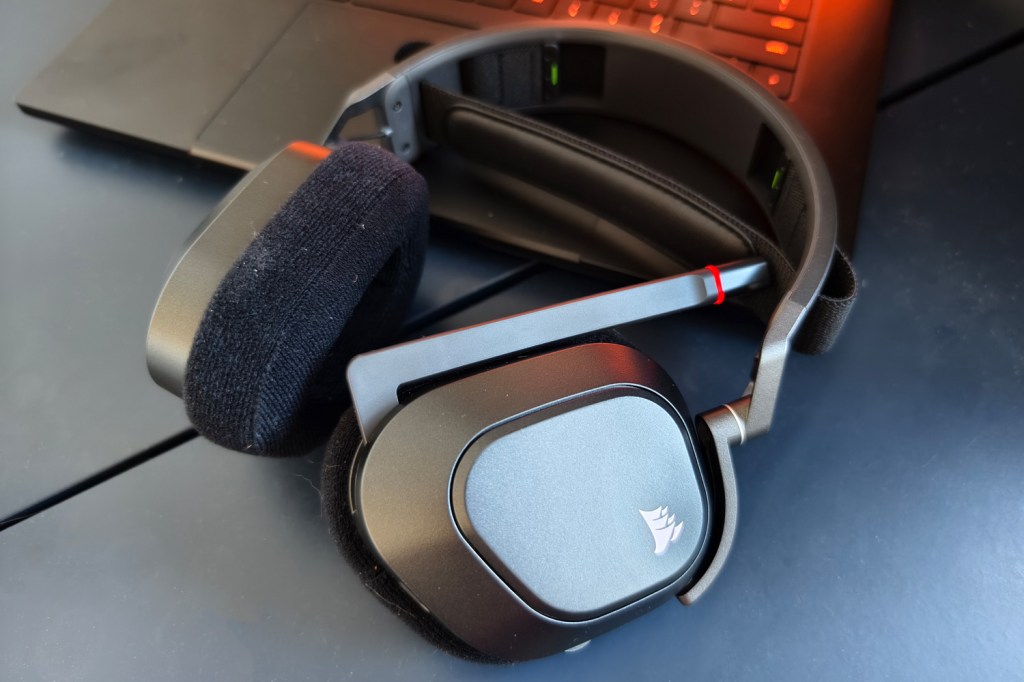
The HS80 Max is very comfortable to wear, delivers clear comms, and plays nicely with more than just your PC or a single games console. It’s not the headset I’d pick for listening to music outside of gaming sessions, but the detail and spacial awareness it delivers make it a great choice for competitive play.
I was most impressed with the stellar battery life, which meant I could stay paired to my smartphone all day for Bluetooth music playback, and not have to worry about plugging in before sitting down in front of my PS5 in the evening.
It might not have the most extensive feature list, and the price has certainly climbed compared to the previous iteration, but the Corsair still manages to undercut several big-name rivals – while also beating them on battery.
Stuff Says…
Improves on an already stellar gaming headset with better connectivity and a beefier battery. The Corsair HS80 Max will please PC and PS5 players alike.
Pros
Comfortable for all-day gaming
Wireless and Bluetooth for wide compatibility
Excellent battery life
Cons
Wireless OR Bluetooth – not both at once
Fierce competition at this price
Corsair HS80 MAX technical specifications
| Drivers | 50mm dynamic |
| Frequency response | 20Hz – 20kHz |
| ANC | No |
| Connectivity | 2.4GHz Wireless via USB dongle, Bluetooth |
| Battery life | Up to 65hrs (wireless) / 130 hrs (Bluetooth) |
| Weight | 352g |


